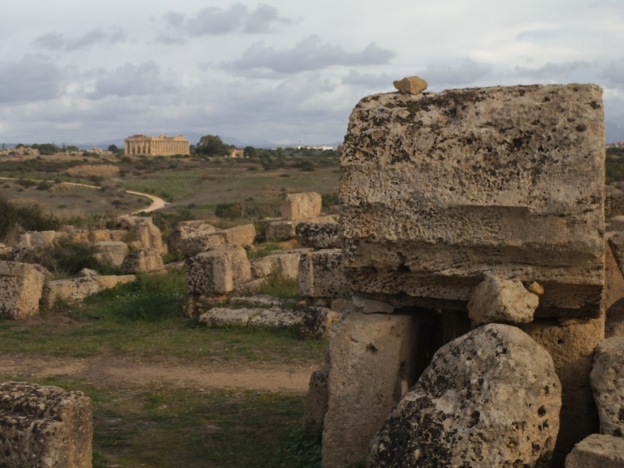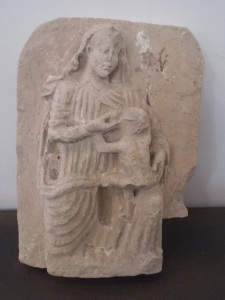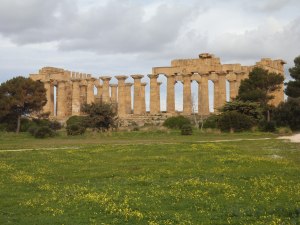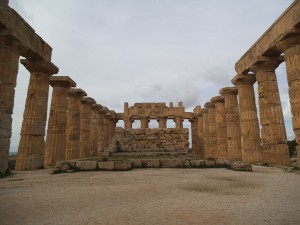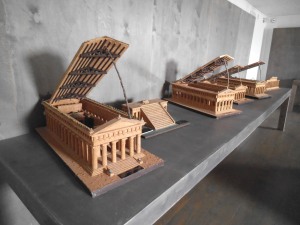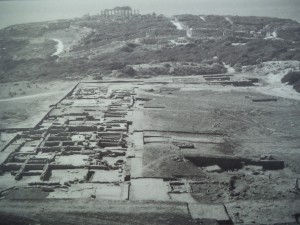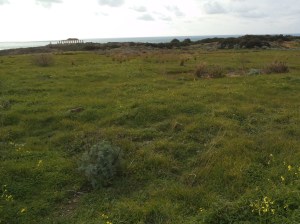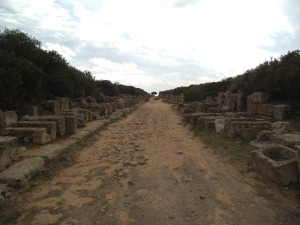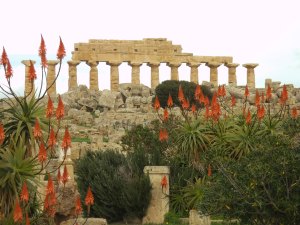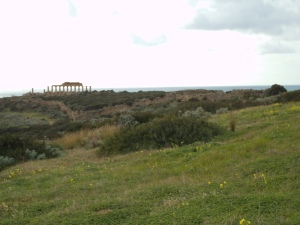 I’m amazed at how many Greek temples and Roman cities Sicily has. I’ve already visited Taormina with its glorious Greek Theatre and Agrigento with its Valley of the Temples. Now I find myself lost in the huge site of Selinunte having attempted a short cut that turns out to be not that short.
I’m amazed at how many Greek temples and Roman cities Sicily has. I’ve already visited Taormina with its glorious Greek Theatre and Agrigento with its Valley of the Temples. Now I find myself lost in the huge site of Selinunte having attempted a short cut that turns out to be not that short.
The Acropolis of Selinunte was built on a raised site, overlooking the Mediterranean Sea. It was founded in the 7th century BC and was once a very powerful city on the southern coast of Sicily. Sadly it was destroyed by the Carthaginians in 409 BC and what remained was later toppled by the earthquakes which are quite commonplace on the island.
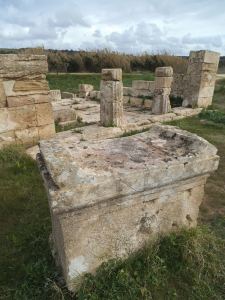 I eventually get back on track and cross the Modione River to reach the furthest section of the site, the Sanctuary of Malophoros. Not the most impressive area with only a small, partially restored Temple of Hera Matronale (the goddess of fertility), whose image is surprisingly similar to the Virgin and Child of the Christian world, but I love being able to roam among the stones and touch the altar, which looks like it is stained with blood from the sacrifices made there.
I eventually get back on track and cross the Modione River to reach the furthest section of the site, the Sanctuary of Malophoros. Not the most impressive area with only a small, partially restored Temple of Hera Matronale (the goddess of fertility), whose image is surprisingly similar to the Virgin and Child of the Christian world, but I love being able to roam among the stones and touch the altar, which looks like it is stained with blood from the sacrifices made there.
I had started my visit with the impressive Temple E (They have a very unimaginative way of labelling the temples), dedicated to Hera and looking almost complete after extensive restoration in the 1960s. Neighbouring temples F and G are still just piles of column drums and oblong stone blocks but it is fun to scramble around and see just how huge the carved columns were.
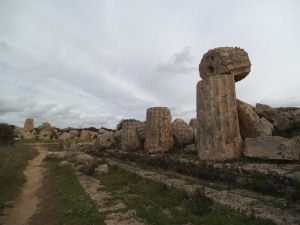
 I get a much better appreciation of the scale and beauty of the temples when I visit the small museum. Inside I find several cork models created by Paolo Lipari who had a passion for this type of work. When he died, his family donated them to the state and now we can all enjoy them. The museum guardian is keen to give me a guided tour in Italian and I’m surprised by how much I understand.
I get a much better appreciation of the scale and beauty of the temples when I visit the small museum. Inside I find several cork models created by Paolo Lipari who had a passion for this type of work. When he died, his family donated them to the state and now we can all enjoy them. The museum guardian is keen to give me a guided tour in Italian and I’m surprised by how much I understand.
My not-so-short shortcut takes me high above the Acropolis to the ancient Agora. It looks like it was excavated in the past but now nature is reclaiming it and preserving what hasn’t already been removed for future generations.
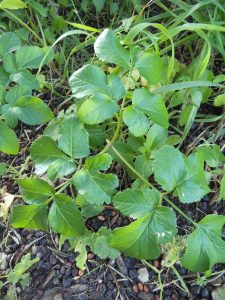 Much of the Acropolis is also covered by soil and vegetation, including the wild celery from which Selinunte gets its name. However, walking down the long, cobbled street it is easy to imagine the shops which lined it, evidenced by the carved stone containers just outside the door lintels.
Much of the Acropolis is also covered by soil and vegetation, including the wild celery from which Selinunte gets its name. However, walking down the long, cobbled street it is easy to imagine the shops which lined it, evidenced by the carved stone containers just outside the door lintels.
The Acropolis temples (A, B, C, D and O) are mostly ruined, the huge columns felled like pine trees in a forest. I find another piece with a distinctive U-shaped carving and wonder again about the engineering involved in producing such immense places of worship.
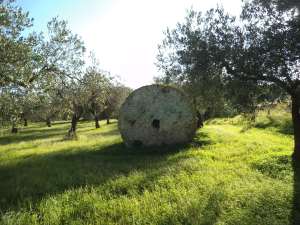 The next day I drive 15 kms west to the quarry of Cava Di Cusa where much of the material for the temples originated. I’m surprised to find the museum guardian there and he greets me like an old friend and insists on giving me another guided tour. Here I can clearly see the process in forming the giant column pieces as some are still in place, having been abandoned before completion. Others lie scattered amongst the olive groves, perhaps left because they were imperfect or unusable.
The next day I drive 15 kms west to the quarry of Cava Di Cusa where much of the material for the temples originated. I’m surprised to find the museum guardian there and he greets me like an old friend and insists on giving me another guided tour. Here I can clearly see the process in forming the giant column pieces as some are still in place, having been abandoned before completion. Others lie scattered amongst the olive groves, perhaps left because they were imperfect or unusable.
 I manage to lose my eager companion when I suggest a longer stroll along the 2 km length of the quarry. Finally, alone with the rock, I can imagine the stonemasons carving away to create a circular crevice around the emerging column. I come across the smooth curved sides of stone, all that remains once the column piece was removed, and piles of smaller stone fragments, presumably discarded from the rock removed.
I manage to lose my eager companion when I suggest a longer stroll along the 2 km length of the quarry. Finally, alone with the rock, I can imagine the stonemasons carving away to create a circular crevice around the emerging column. I come across the smooth curved sides of stone, all that remains once the column piece was removed, and piles of smaller stone fragments, presumably discarded from the rock removed.

